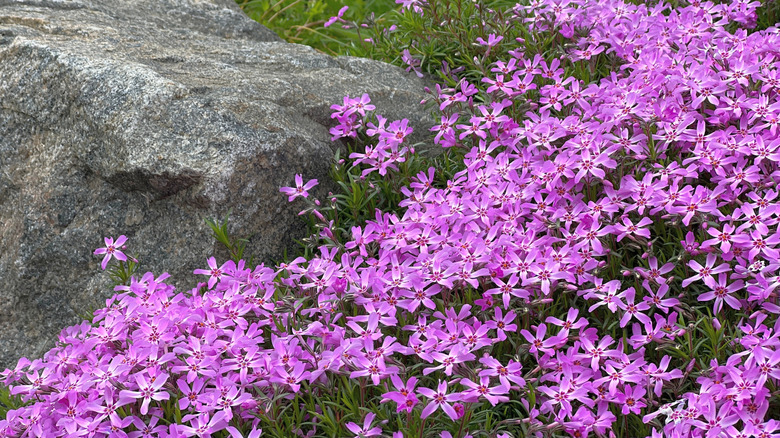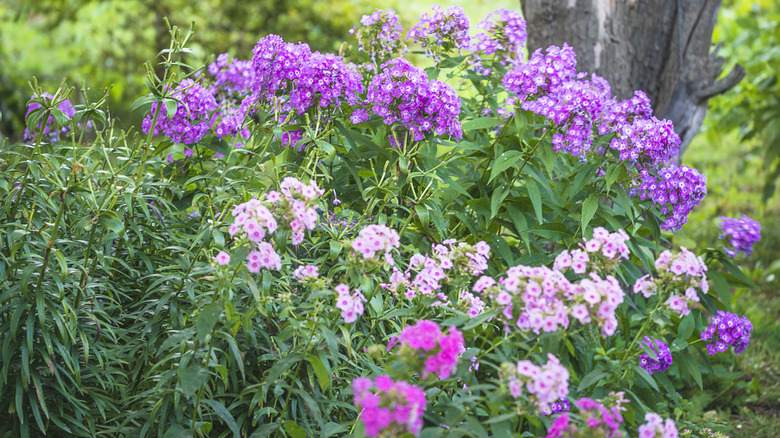The Obvious Companion For Creeping Phlox We Should Have Thought Of Sooner
The spring blooms of creeping phlox (Phlox subulata) are a welcome sight after a long winter. Whether you have white, pink, or purple in your yard, creeping phlox is a lush plant that happily spills over walls and forms dense mats of flowers. If you find yourself missing their delicate flowers after the spring bloom, there's an obvious companion plant to keep your garden filled with phlox: more phlox! While creeping phlox forms low-growing ground cover of flowers and foliage, garden phlox (Phlox paniculata) grows up to 4 feet tall and blooms in the summer. These plants share similar growing conditions and will work together to bring more phlox blooms to your garden throughout the season.
Both of these types of phlox prefer full sun but can handle partial or dappled shade, especially during the height of summer heat. Well-drained, moist loamy soil with high organic matter will work to keep both plants happy. However, creeping phlox prefers acidic soil, which will be just fine with garden phlox as it can handle a wide variety of soil pH. Both are native to the Eastern United States, which makes them easy to grow in USDA Zones 4 through 8, though creeping phlox is hardy down to Zone 3 and up to Zone 9.
As native plants, both creeping and garden phlox are favorites of hummingbirds, bees, and butterflies. You may also find rabbits nibbling on the foliage of your creeping phlox. Still, they will help bring more pollinators to your yard.
More tips for growing phlox together
At only about 4 inches tall, creeping phlox is often used at the edges of beds or along walls where it can cascade over. Garden phlox, on the other hand, is typically used more toward the middle of garden beds due to its height. The creeping variety can make a good ground cover, performing the important function keeping its companion's base cool instead of using mulch.
Plant garden phlox 18 inches apart, and creeping phlox 2 feet apart to allow for air circulation, as the taller variety is susceptible to powdery mildew. In fact, garden phlox has more potential problems than its creeping cousin. From phlox bugs to root rot, you may need to keep a closer eye on this plant, though some cultivars have been bred for resistance to these kinds of issues. While it's not strictly necessary, deadheading garden phlox will help keep it healthy, as will cutting it down in the fall and disposing of its stems and foliage.
Both of these phlox varieties prefer full sun, and you may find garden phlox is more resistant to problems when it's not in the shade. However, if you have a shady spot where you would like phlox, there is a third variety to consider: woodland phlox (Phlox divaricata). This plant prefers the shade and is only 6 to 12 inches tall. Learn more about growing different phlox flowers to get the best results.

